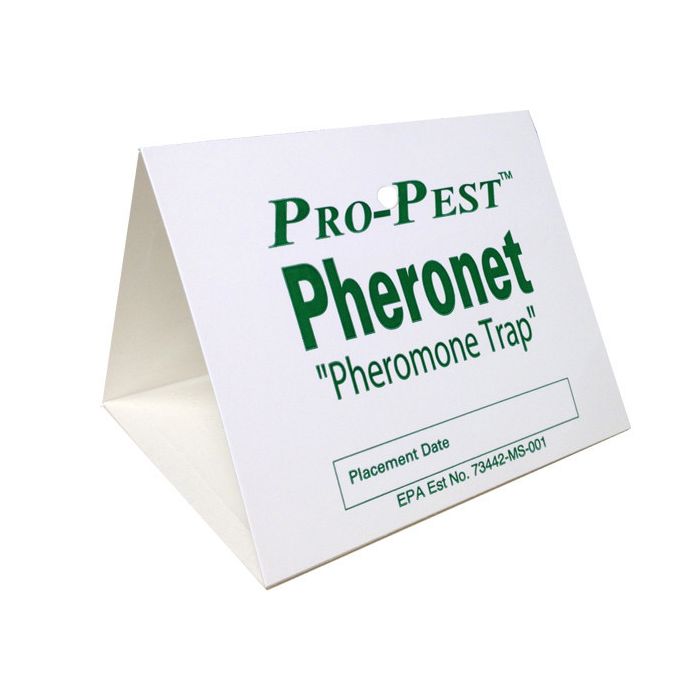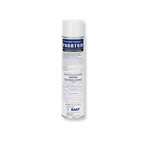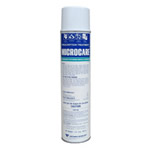How To Get Rid of Pantry Moths
-
Identify the Moth and Inspect
Determine if you have pantry moths, cloth moths or simply outdoor moths flying around lights at night. The most common pantry moths are the Indian Meal Moths and Mediterranean Flour Moths. Pantry moths are also referred to as flour moths, seed moths or mealy moths.These pantry moths are found near stored foods and pet foods. All these pantry moths are small and narrow (3/8" to 1/2"). They vary in colors from gray to coppery brown . These pests are found world wide around dried goods and foods, including, grains, cereals, wheat, cornmeal, dried fruits, seeds, crackers, biscuits, nuts, powdered milk, dried pet food, bird seed, chocolate, red peppers, tobacco, and cocoa beans.
Common clothes moths like the Casemaking Cloth Moth or Webbing Cloth Moths are identified from the damage they cause to fabrics such as woolens. Cloth moths eat the keratin found in woolens.The pantry moths are larger than the fabric eating moth clothes moths..
-
Look For: Pantry Moth Signs
You may see small like moths flying mostly at night in a random, zigzag pattern.
Look around the edges of the cabinets for webbing and inside the packages of food stuffs, around the lids and tops in particular.
When inspecting the food, look for larvae or web like strands. The larvae look like maggots. The larvae are very small and may require a flash light and magnifying glass to see. The larvae will cause the food to clump together, which is easier to see with the naked eye. Go through all packages such as cereals, grains, flour, pet foods, powdered milk, crackers,bird seeds, ect. The older items are most likely to be infested, but you could also have an infestation in newer items, even if the container is sealed. Do not forget the spices. Any thing that is not in a tin can can be a suspect. Look for their larvae (looks like worms) and any webbing inside the package or tiny pinholes. If you can not find a source in the obvious places, check items like dried flowers or any art piece or decoration made from dried food ingredients. There is also the possibility that you may a source of infestation from a spilled food behind an appliance that is hard to move. Rodents, and especially mice will hoard food in hidden locations such as behind walls, behind dishwashers and refrigerators or behind cabinets.
-
Remove Infested Foodstuffs & Clean
Unfortunately, this step is the most time consuming and costly. Remove infested stored food and pet food. Also remove shelving liners and clean and vacuum. Vacuum the edges of doors, inside wire shelving, cracks and crevices, edges of walls, and any shelf support pin holes. Pantry moth eggs and larvae may be hidden in these places, as well. This is part of a prevention and sanitation process that is unavoidable and necessary for your success. If you are not sure if a product is infested or not, quarantine it in a glass jar or Ziploc plastic bag (make sure it is secure) for a month. If you find signs of infestation afterwards, discard it.
-
Pantry Moth Control- Moth Traps
Pantry Pest Traps
Pantry moth traps use sex pheromones to attract the male moths. These traps are all natural and safe to use. Catching the male moth will prevent mating and more egg laying by the female moths.Some of these pheromone traps have the pheromone impregnated inside the glue. Some traps have the pheromone lure in a separate packet to be placed on the glue section. The traps are made of cardboard and have a glue surface to catch the male moths. Never use too many traps in one room. One to two traps are sufficient. If you use too many traps, the male moths may be confused with so many pheromones and are not lured to a single trap. We carry three types of pantry pest traps, the Propest Pheronet Pantry Pest Trap , the Revenge Pantry Pest Traps and the Pantry Pest Trap by Surfire. We personally recommend the Propest Pheronet or the Revenge brands.
After these pheromone traps fill up with adult moths, replace the traps if necessary.
Pantry Pest Traps - Propest Pheronet,
 The Propest Pheronet Pantry Pest Moth Trap is a distinctive trap in that it not only is designed to capture
the pantry
moths, like the Indian Meal Moth, but also Cigarette
Beetles.
The Propest Pheronet Pantry Pest Moth Trap is a distinctive trap in that it not only is designed to capture
the pantry
moths, like the Indian Meal Moth, but also Cigarette
Beetles.
Propest Pheronet Pantry/Beetle Pest Trap is a pre baited triangular trap with pheromones to attract Plodia, Ephestia, & Lasioderma, Indian Meal Moth, Almond, Raisin, Tobacco & Mediterranean Flour Moths, and Cigarette Beetles.
Simply remove the release paper to expose the glue, fold into triangle shape and it's ready to use(Pre-baited with pheromones).This advanced technology is Pherogel . Pherogel is an advanced gel matrix formulation which protects the pheromone(s).
-
Insectide Aerosols for Pantry Moth Control
Insecticide Aerosols
Using aerosols is an useful option. After the infestation has been removed and shelving has been vacuummed and cleaned, spray the recommended aerosols, Alpine PT, Phantom, or Microcare. The Phantom aerosol has a very broad label and does a very good job killing ants as well. The Alpine PT is a reduced risk insecticided and the Microcare is a simple contact kill insecticide with pyrethrin. Pyrethrin is considered a natural product, but will leave no residual.
All of these aerosols have a crack and crevice tip(looks like a drinking straw) that can be used to reach cracks and crevice or void areas.We recommend Phantom or Alpine aerosols because of their residual effects, helping to prevent further pantry pest infestations.

Alpine PT Aerosol
Alpine PT is a reduced risk insecticide, a residual aerosol ,with a crack and crevice tip , sprayed in the cracks and crevices, to kill the adult beetles and moths.
You will need 2-4 treatments spaced about 3 weeks apart, due to the nature of their cycles.
 Phantom Aerosol has a very broad label for a variety of insects. Not only does is work well on pantry pest, but kills ants very well because it is classified as a non-repellent (the insects can not detect it.
Phantom Aerosol has a very broad label for a variety of insects. Not only does is work well on pantry pest, but kills ants very well because it is classified as a non-repellent (the insects can not detect it.
Creates an undetectable treatment zone that pests continue to contact
Comes with a crack and crevice tip for crack and crevice treatments only.

